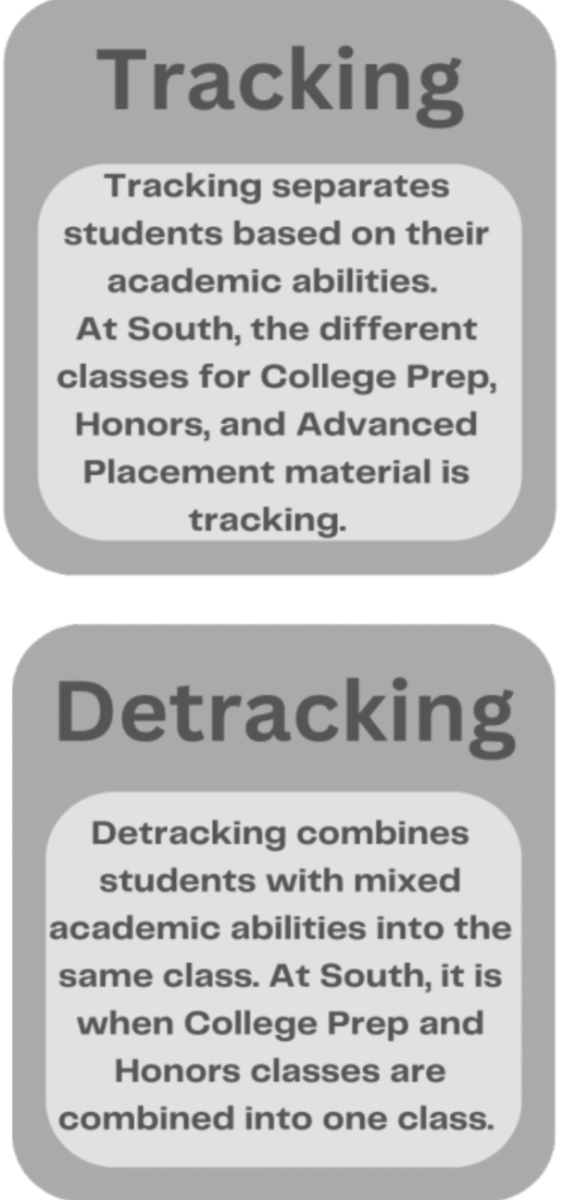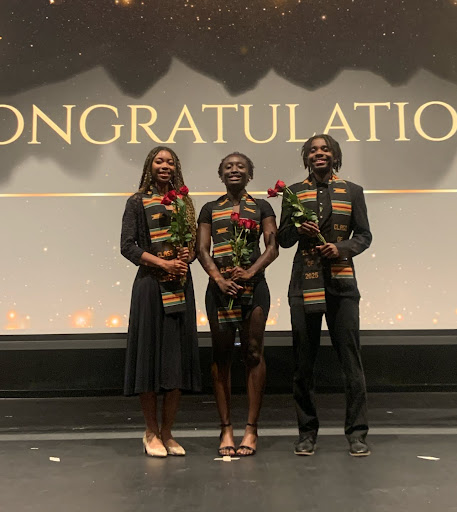In the 2021-22 academic school year, Ms. Julia Ferrante taught South’s first multilevel class for the freshmen Algebra 2 course. One year later, the freshmen Algebra 2 and World History classes became multilevel. This 2023-24 school year, all freshman core classes–Algebra 2, World History, Biology, and Language Arts 1– were multilevel.
“We wanted to make sure that kids feel included in the classroom, while also supporting that transition between middle school and high school,” said Principal Ms. Jessica Cincotta. A multilevel class, or detracked class, combines the College Preparatory (CP) level and Honors level into one classroom, exposing students to both types of material from the start of the school year. “Through differentiation of instruction in one classroom, we offer honors credit for those students who meet that prerequisite and want to challenge them-
selves in that way,” said Principal Cincotta. “Students in CP get a glimpse of what that looks like and can take the risk if they want to.”
The administration also considered the impact that multilevel classes would have on the transition from middle school to high school. “By having kids in the same class students can change their mind without blowing up their whole schedule,” said Math Supervisor, Ms. Andrea Bean. “This makes course decisions a little less high stakes because there’s a softer landing.” Easing the transition between these two educational stages wasn’t the only goal.
According to U.S. News, South has 1,624 students, 86% of whom are minorities who come from a
diverse range of races, such as Asian, Black, and Hispanic, and different economic backgrounds. Often with tracked classes, students are separated based on these differences. “As a district, multilevel classes are partially due to trying to close the gap,” said Assistant Principal Ms. Valerie Rodriguez. “To make
opportunities more equitable, give all students access to higher level classes, and then in turn increase our numbers of minority students in higher level courses.”
The district has been working on the logistics of multilevel classes since around 2015. While multilevel classes were introduced in the middle schools around 2017, implementing them into the high
schools took more time. “Ms. Ferrante piloted multilevel classes two years ago by herself,” said Ms. Bean. “We knew we were going to roll it up, but we were curious about high school and we were a little concerned about the effects of the pandemic.”
The feedback received from Ms. Ferrante helped teachers during the 2022-23 school year when the multilevel structure was implemented in all Algebra 2 and World History classes.
Last year, students and teachers in multilevel classes were surveyed by administrators about the structure of the classes to see if they could work in high school before implementing them into all freshman core classes.
“I interviewed tons of students,” said Ms. Bean. “Before we rolled in Biology and Language Arts, we really wanted to make sure we had it down. Most students were happy.”
By the end of the year, the new structure was deemed successful from the results of the student surveys, so all freshman core classes became multilevel this school year. Over the summer and during the year, intense professional development days were held to support teachers in adapting to this new teaching structure.
Currently, there are no plans to expand multilevel classes into other grades, but the same structure will continue for all fresh men classes next year. The ability for multilevel classes to expose students to all types of
materials makes it an appealing structure to continue for students and faculty alike. The structure and feedback of the multilevel classes is what sets up students for success in high school.
“When students were in separate classrooms, you were never exposed to the discourse in other classrooms or the assessments,” said Ms. Cincotta. “Now, all of a sudden, everyone can see a glimpse into what that is.”





